We’ve covered the Questyle M12 and M15 dongle DACs extensively since their 2022 debut—including full reviews and an Editor’s Choice Award for the M15. Questyle has packed an impressive amount of performance and refinement into two exceptionally compact devices. The M15, in particular, exemplifies the “Style” in Questyle, with a sleek glass window that showcases the brand’s engineering prowess and attention to detail.
When I got word of second-generation versions of both the M12 and M15 dongles, I was initially concerned. There’s always some risk in trying to “improve” a best-seller, and my first reaction was, “Please don’t mess these up—I recommend them all the time and don’t want to start saying, ‘If you can find a Gen 1…’”
The good news? After spending time with both the M12i and M15i, I can confidently say—with one small caveat—that these new models hold their own against the originals. In fact, they bring a few welcome updates, especially for Apple users.
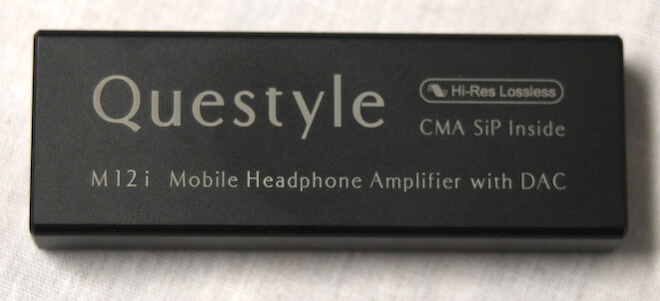
Staying Current
The first thing you’ll notice is that Questyle avoids calling the M12i and M15i “dongles” altogether. Instead, they refer to them as Mobile Headphone Amplifiers with DAC. Their reasoning? Questyle emphasizes that their current-mode amplification sets them apart from typical dongles, arguing that amplification is just as critical—if not more so—than DAC quality when it comes to overall sound performance. While most competitors focus primarily on the DAC, Questyle puts equal (or greater) focus on the amplifier stage.
Without diving into a full-blown dissertation, most amplifiers rely on voltage to drive transducers, while current-mode amplification—like Questyle’s—is much less common, especially in portable gear.
Because of this design choice, Questyle can’t just drop in an off-the-shelf system-on-a-chip module to handle both DAC and amplification duties like many of their competitors do. That’s also why so many dongles end up sounding similar—they’re just different shells wrapped around the same internals.
Current-mode amplification, on the other hand, offers lower distortion, faster transient response, and greater control over difficult headphone loads. The result is a cleaner, more dynamic sound that stands out in a sea of cookie-cutter dongles.

DAC to the Future?
The M12i and M15i retain the ESS ES9281AC chip from the previous generation for DAC duties, but now support up to 32-bit/768kHz PCM and DSD512—effectively doubling the available resolution for both PCM and DSD compared to their predecessors.
The trade-off? MQA is no longer supported. For many, the absence of MQA will be a non-issue—or even a welcome change—but for some, it could be a deal breaker. It’s worth keeping in mind when deciding between the new and older models.
The reality, however, is that MQA was dropped by TIDAL and most music listeners are unlikely to use it.
Amplification is managed by Questyle’s custom SiP current-mode amplifier chips—developed and patented in-house. These SiP modules function similarly to op-amps but aren’t bound by the typical 5-volt limitation of USB power.
When paired with the Torex power management system, they enable the M12i and M15i to deliver a high-current, low-distortion signal to your headphones with impressive control and efficiency.
Other notable updates include the addition of Apple MFi certification, which ensures seamless compatibility with Apple devices. The M12i and M15i now support a wide range of platforms, including iOS, Android, Windows, macOS, and HarmonyOS. While four of these platforms are well-known globally, it’s worth mentioning that HarmonyOS, developed by Huawei, is not as widely recognized in the US and Europe.
However, it is increasingly popular in regions such as China, Africa, and the Middle East, where Huawei phones and devices have a significant market presence. This added versatility makes the M12i and M15i particularly appealing for users across diverse ecosystems.

The previous generation of Questyle’s M12 and M15 already worked seamlessly with iPhone, which was one of the reasons they outperformed other products like those from Cayin to earn our Editor’s Choice award. However, with the new MFi certification in this generation, the M12i and M15i now come with the added assurance of full compatibility with future Apple products.
This guarantees that users can continue to rely on these dongles for seamless integration with new iPhones, iPads, and other Apple devices as they are released. This forward-thinking approach enhances the long-term value of the M12i and M15i, making them a solid investment for Apple users.
The M12i can be considered a more compact subset of the M15i, with the latter offering a more feature-rich experience. So, let’s dive into the M15i first to get a comprehensive understanding of its performance and capabilities.
Questyle M15i
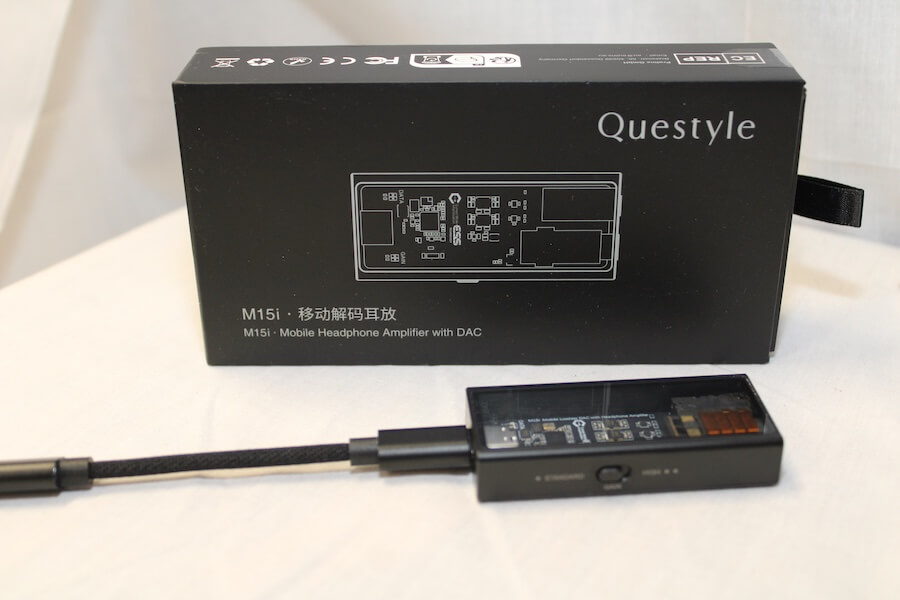
The M15i has a clean and sleek design, with a USB Type-C port on one end and both 3.5mm single-ended and 4.4mm balanced outputs on the other, giving users flexibility in how they connect it to their headphones or audio gear. The anodized aluminum housing not only looks great but is also durable, while the glass lid provides a unique, transparent aesthetic that showcases the internal components.
A two-position gain switch on the right side allows users to adjust amplification levels for different headphones, and LEDs inside the face indicate the active gain mode, which adds to the visual appeal. However, it’s worth noting that the M15i ships with a USB Type-C to Type-C cable and a Type-A to Type-C cable, but it doesn’t include a Lightning cable, so Apple device users with older iPhones/iPads will need to pick one up separately.
One notable feature of the Questyle M15i is that it will not power on until a headphone is connected. This is different from many other dongles, which typically power on automatically when connected to a source device. The benefit of this design is that the M15i doesn’t draw power if it’s plugged into a phone without headphones, conserving battery life.
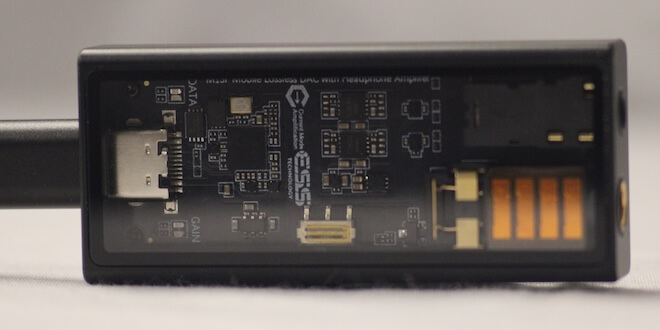
However, the downside is that when frequently changing headphones, the music app may close due to the DAC losing connection, which could interrupt playback and require a brief reconnection process.
Internally, the Questyle M15i utilizes the ESS 9281 DAC module paired with four current mode amplification circuits, delivering a fully differential balanced output. This setup supports PCM from 44.1kHz to 768kHz and DSD up to DSD512. Notably, MQA is not supported on the M15i, which may be a factor to consider for those who use MQA-encoded content.
In terms of performance, the M15i boasts an impressive THD+N of 0.0003%, offering a jet-black noise floor and sufficient power to handle a wide range of headphones and in-ear monitors without introducing hiss. The result is dynamic, clear, and noise-free audio, making the M15i versatile for various listening scenarios.
I prefer the manual gain control of the M15i over the automatic gain of the M12i, as I use several 600Ω headphones that the M12i mistakenly identifies as line-in devices, causing it to set the volume to maximum.
Having had about a month now to listen through the M15i, I can confidently say that all the reasons I recommended the original M15 still stand (aside from the lack of MQA, which I personally won’t miss). If anything, the addition of the higher bit rate DSD512 more than makes up for it. At $249, it’s an easy recommendation.
Questyle M12i
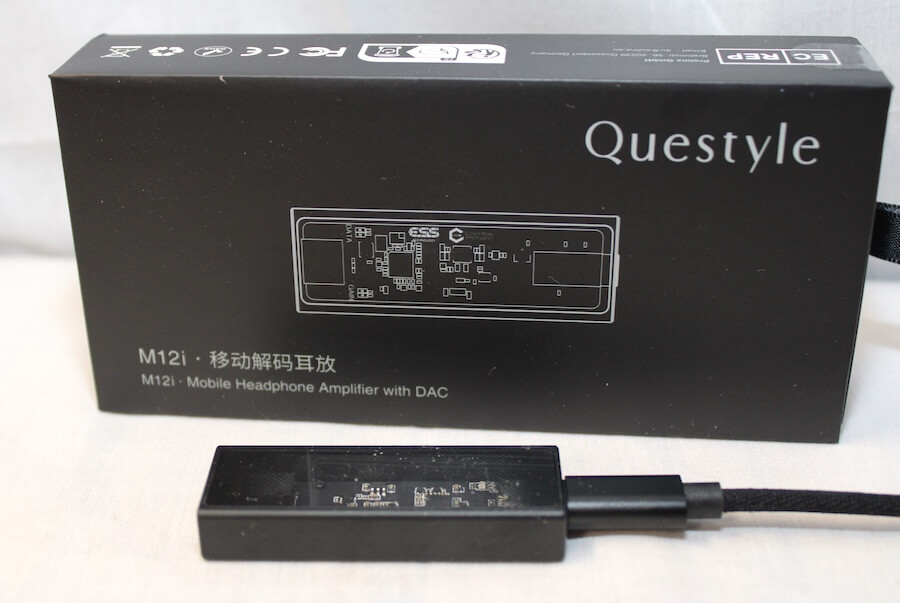
The M12i can be thought of as the single-ended counterpart to the M15i, featuring the same DAC, one of the two SiP modules, and the 3.5mm output port. The main difference from the M15i is the gain control. While the M15i offers a manual gain switch, the M12i automatically adjusts gain based on the impedance of the connected device.
Like its larger counterpart, the M12i features two LEDs to indicate the gain setting, which should be checked before putting headphones on your ears for the first time. It’s important to start with the volume at minimum and ensure the headphones are off your ears when using this device, until you’ve familiarized yourself with how it reacts.
The reason I emphasize this is that the gain switching works well some of the time and poorly at others. It performs well with devices that have either high impedance and low sensitivity or low impedance and high sensitivity. However, when dealing with devices that have both high impedance and high sensitivity, the M12i tends to apply too much gain, causing the volume control to be lowered significantly to maintain a comfortable listening level.
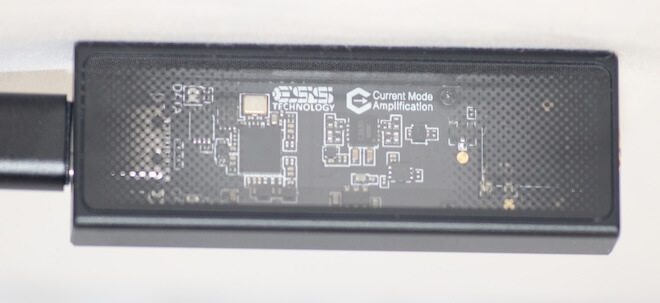
The polar opposite occurs with devices that have low impedance and low sensitivity (like the Fostex T50rp), which also confuse the M12i and lead to an underpowered condition. Unfortunately, there is no adjustment at the device level to correct this issue, so be aware that headphones in this category may not be optimal with the M12i.
However, the T50rp works well with a balanced cable on the M15i, so for those interested in using the T50rp or its derivatives, the M15i offers a better solution.
Another issue arises with ultra-high impedance (600Ω+) devices, which are sometimes misread as line-out devices by the M12i. This causes the M12i to enter pre-amp mode, resulting in a loss of volume control. I experienced this with both Beyerdynamic and AKG 600Ω models. This is an important consideration for users with high-impedance headphones, as it may lead to difficulties in controlling volume when using the M12i with such devices.
Despite the aforementioned limitations, the M12i performs excellently with the majority of headphones and in-ear monitors. It supports PCM up to 768kHz and DSD512, offering a great deal of flexibility in terms of audio quality. Given its build quality, sound performance, and the price of $149, the M12i is still an easy recommendation for most users looking for a reliable and high-quality portable DAC/amp solution.
Comparison
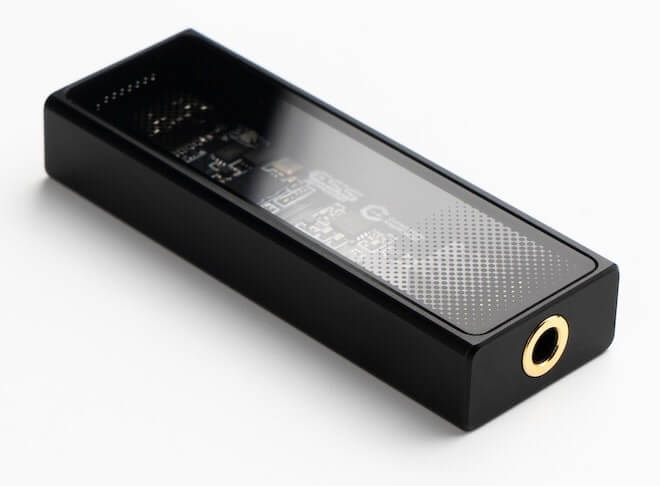
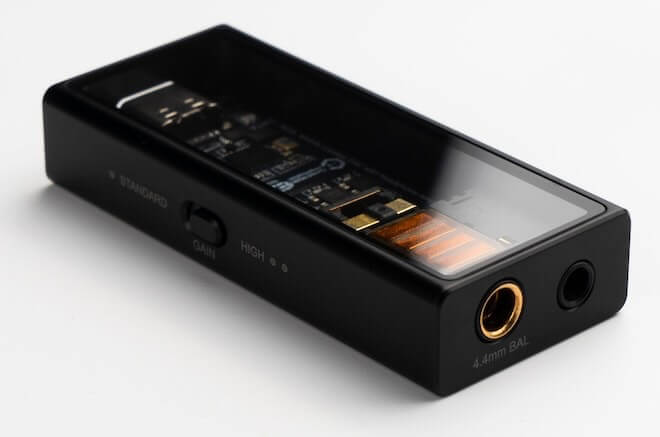
| M12i | M15i | |
| MSRP | $149 | $249 |
| Outputs | 3.5mm | 3.5mm 4.4mm fully balanced |
| Gain Control | Automatic | Manual |
| CMA SiP Module | Single | Dual |
| CMA Engines | 2 | 4 |
| DAC | ESS ES9281AC | ESS ES9281AC |
| Decoding | PCM768 / DSD512 | PCM768 / DSD512 |
| THD + N | 0.0003% | 0.0003% |
| Dimensions (HxWxD) | 56.9 × 20.2 × 9.5 mm | 61.91 × 27.9 × 12 mm |
The Bottom Line
For those considering upgrading from the earlier M12 or M15 models to the new M12i or M15i, the decision largely depends on your music collection and needs. If you rely on MQA, sticking with the previous generation makes more sense, as the newer models do not support MQA.
However, if your collection includes a lot of DSD512 or PCM files at 384kHz or higher, the M12i and M15i will provide a significant upgrade, as they handle these formats natively without the need for down-sampling.
One important note if you do upgrade: the LED indicators in the new models serve a different purpose compared to the first generation, so be prepared to adjust to their new functionality. Additionally, if you’re using Apple products, don’t forget to order the Lightning to USB type-C cable separately—it’s odd that a certified Apple MFi device doesn’t include this cable by default.
In summary, if you’re an Apple user with high-resolution audio files and want the best possible experience, the new models are a great choice. But for MQA users, sticking with the original M12 or M15 is the way to go.
Where to buy:
- Questyle M15i – $249 at Amazon
- Questyle M12i – $89 at Amazon
Related Reading

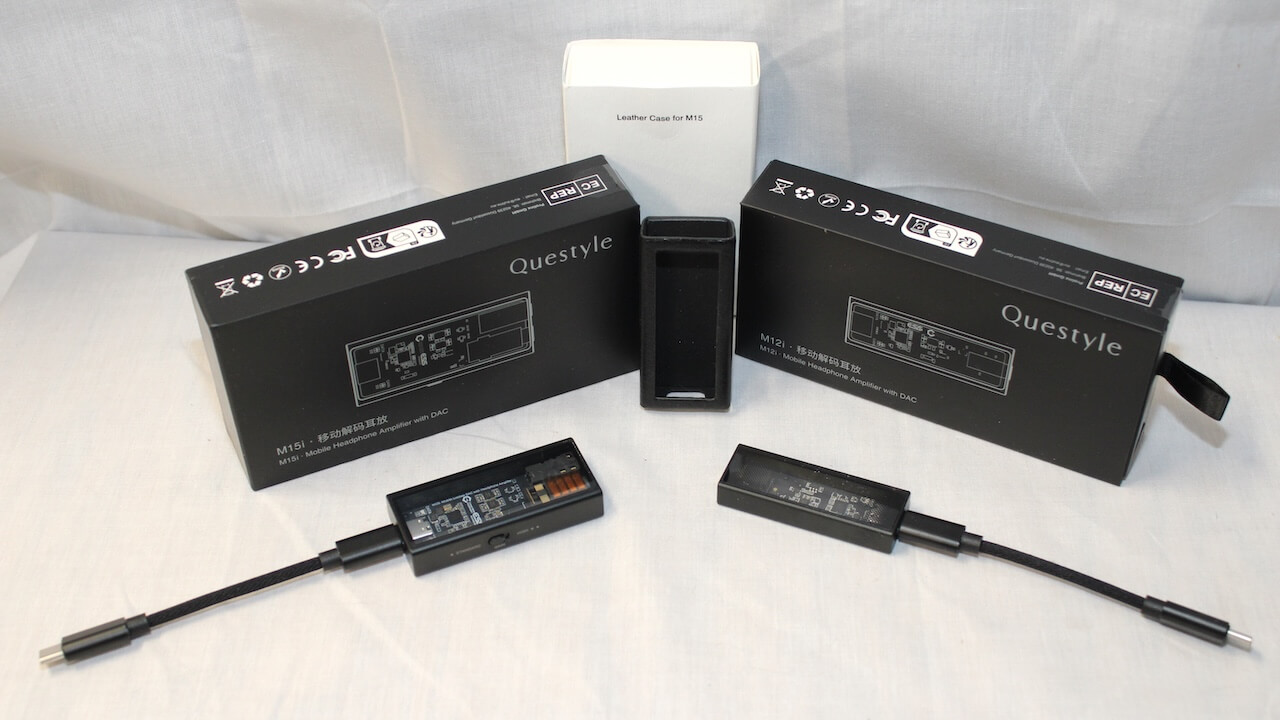

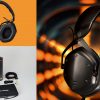


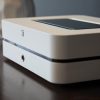

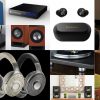
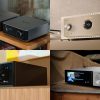
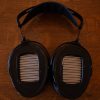

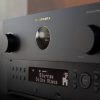
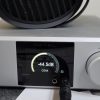


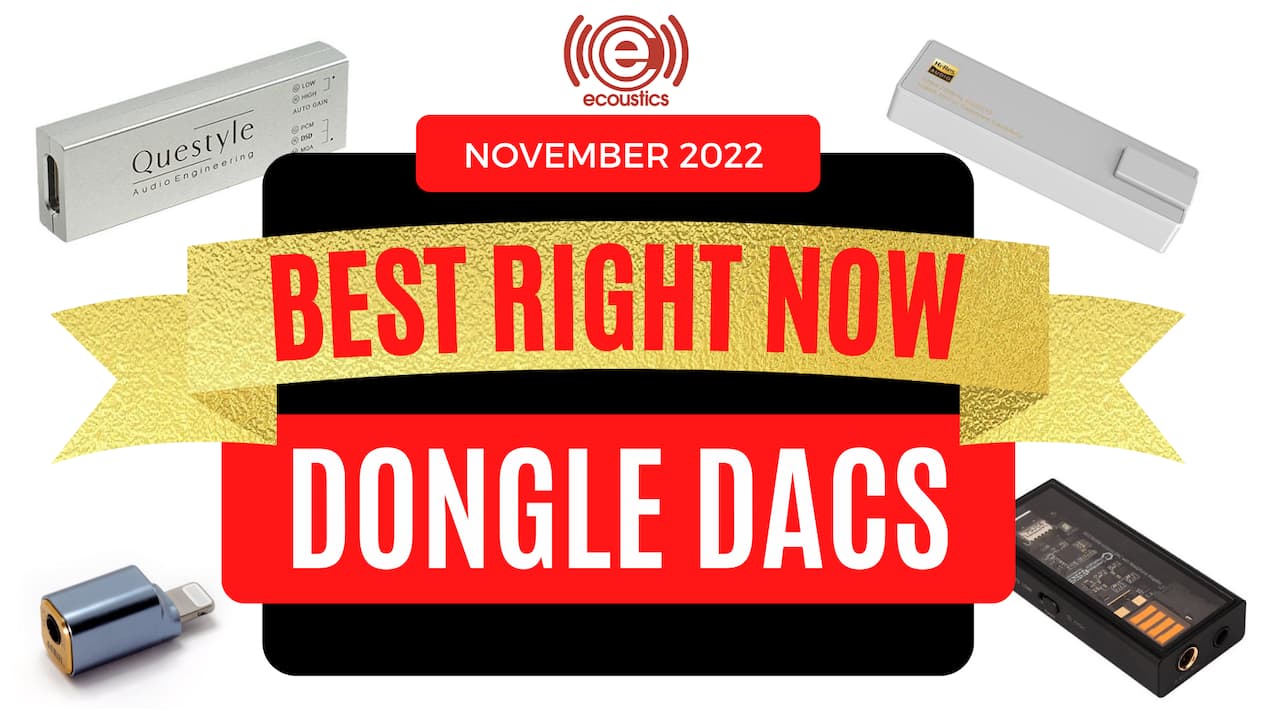
















Anton
April 6, 2025 at 6:41 pm
No MQA and will work well with my iPhone? Sold.
I listened to their desktop amplifier a few years ago at a dealer and thought it was one of the best headphone amplifiers I’ve ever tried. So many options as well.
These seem very affordable considering their power and performance.
Guess some things designed and made in China are worth buying.
michael delaney
June 4, 2025 at 1:04 pm
Im sorry but this thing is a worthless piece of garbage. Sounded great for the 3 days it worked. Within 3 days the usb-c port became loose and anytime i touched my phone the sound would disconnect. A quick google search showed this is basically a universal problem that almost everyone who buys the 15i has. Its a dongle dac, you have to be able to move your phone without the thing malfunctioning. I wish it was made better because god damn does it sound good with my iem’s!!!